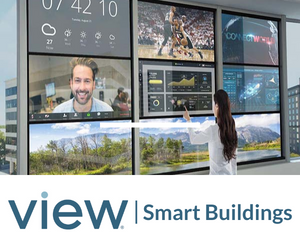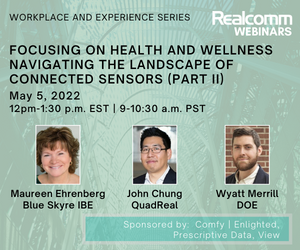2022 Is the Year to Make Your Building Smart - Here’s What That Means
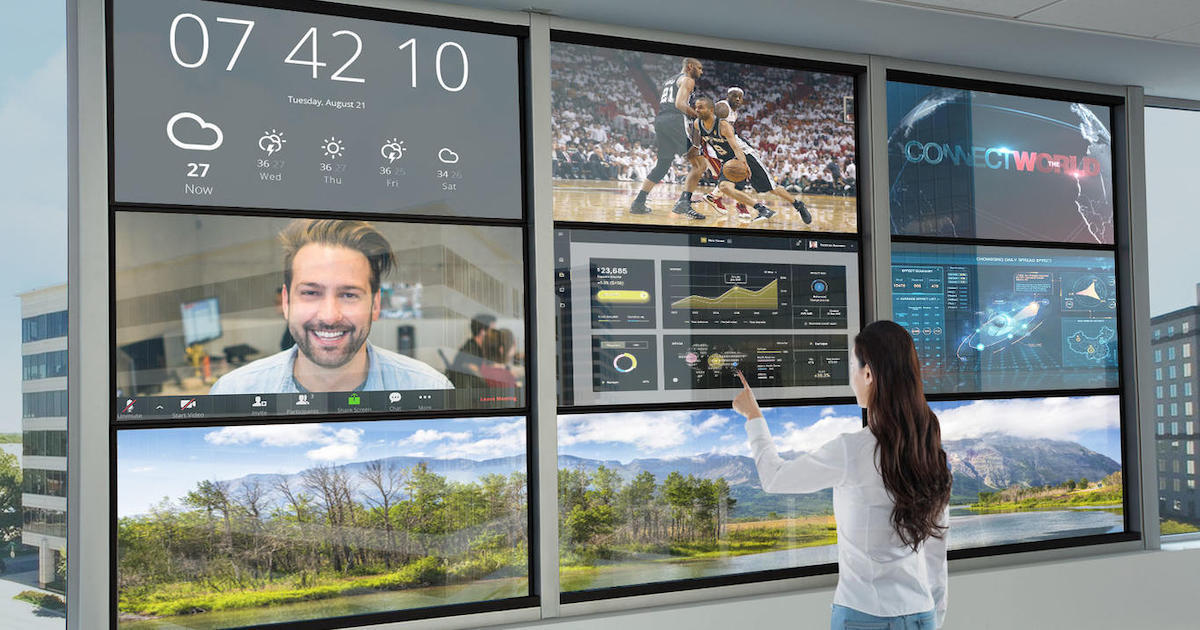
As part of my job, I talk to CEOs and CIOs of some of the world’s largest real estate companies, and I was particularly struck by one executive who told me recently, “This is the year I’m going to make all my buildings smart.”
It’s a consistent theme I’m hearing from leaders around the world. They are all trying to solve similar problems brought on by big societal trends. There is pressure to build more sustainable buildings and create better experiences that benefit the health and productivity of people while still running a successful portfolio. Recent advancements in material science, cloud computing, software, and machine learning make this the right moment.
The digital transformation of real estate is long overdue. How much have buildings really evolved since the introduction of electricity, air conditioning, and elevators? Other than flashy touches here and there, buildings have remained pretty static. However, tenants today are demanding more from their buildings, and industry leaders are taking concrete steps to use technology to better serve their customers and end-users.
The most significant impetus for change comes from a growing emphasis on sustainability and reducing our carbon footprint. Buildings consume almost 40% of all energy and are the single largest contributor to climate change, so it is imperative they become more energy-efficient. Property owners are allocating resources to measure their energy and carbon footprints and spending money on solutions that automate energy savings while simultaneously improving experiences for those who use the buildings. New legislation in New York and pending legislation in California, as well as newly proposed disclosure requirements by the SEC, are making these efforts not just a “nice-to-have” but a “must-have” to avoid costly fines for both owners and occupiers.
There is a similar push to improve health and wellness in indoor spaces. From doctors to designers, experts have told us for years that the quality of our environments matters, and now the rest of the world is catching up. This increased awareness has been accelerated by the COVID-19 pandemic, as people pay more attention to their environment – things like indoor air quality, ventilation, temperature, noise, natural light, and how all these factors impact our health. The pandemic has also altered how we function effectively in communal workspaces. Hybrid work is here to stay, so companies are focused both on giving people a reason to return to the office and on finding solutions that enable employees to collaborate effectively with their remote colleagues.
The benefits of using technology to transform buildings to benefit both people and the planet are already known. The benefits of natural light have been proven for more than a century. Humans are inherently an outdoor species; however, we spend more than 90% of our time indoors. People who live and work in buildings with smart windows that automatically adjust to the sun to maximize natural light while controlling glare and heat report half as many incidents of headaches and eyestrain, lower stress levels, and higher productivity than people working in spaces with conventional windows and blinds.
Cybersecurity is another topic near the top of real estate owners’ list of priorities. We now read about major hacks, privacy breaches, and data thefts almost every day. As a result, building owners are beginning to treat their buildings like connected, digital assets and are investing proactively to secure them rather than bear the significant operational and reputational costs of cyberattacks. And, for those who think they can wait, US regulators are expected to approve any day regulations requiring owners to report cybersecurity incidents.
There is a big push to use technology behind the scenes to make building operations more cost-efficient and more predictive. Your workplace might already be implementing solutions that reduce electricity and water usage, predict equipment failures before they occur, and provide insights to make smarter decisions. In larger enterprises, portfolio managers are using these tools to centralize the management of all their assets and simplify their capital planning -smart business strategies. These optimizations extend the life of equipment, increase staff productivity, and facilitate the transition from on-premise hardware to cloud-based solutions–which reduce costs and improve net operating income (NOI).
As owners upgrade their buildings with disparate point solutions, their ability to create a truly “smart building” can be limited when data ends up siloed in different systems. For example, optimizing the energy consumption of an HVAC system needs a combination of data from an occupancy sensing solution and different air quality sensors being fed into a third building management system. This requires extensive data and system integration, and property owners are being forced to become technology integrators to realize the full value of their technology investments. As the digital transformation of the industry matures, platforms will become more open and composable, with turn-key integrations that allow property owners to focus their efforts on driving business outcomes, rather than on building and integrating digital infrastructure.
Truly great technology makes the right thing to do the easy thing to do. It bridges the gap between concept and mass adoption. It turns a vision into the standard. We have reached that point with smart buildings. View has created an open, flexible, upgradable operating system that hides all the complexity and just works, so property managers can focus on their real jobs: serving their tenants or workforces while managing their buildings. Companies have designed our solutions into 100 million square feet of space, and that number is doubling every year. Now is the time to make buildings smart. Those who wait will be left behind.
This Week’s Sponsor
Yardi® develops and supports industry-leading investment and property management software for all types and sizes of real estate companies. Established in 1984, Yardi is based in Santa Barbara, Calif., and serves clients worldwide. For more information on how Yardi is Energized for Tomorrow, visit yardi.com.
Read Next
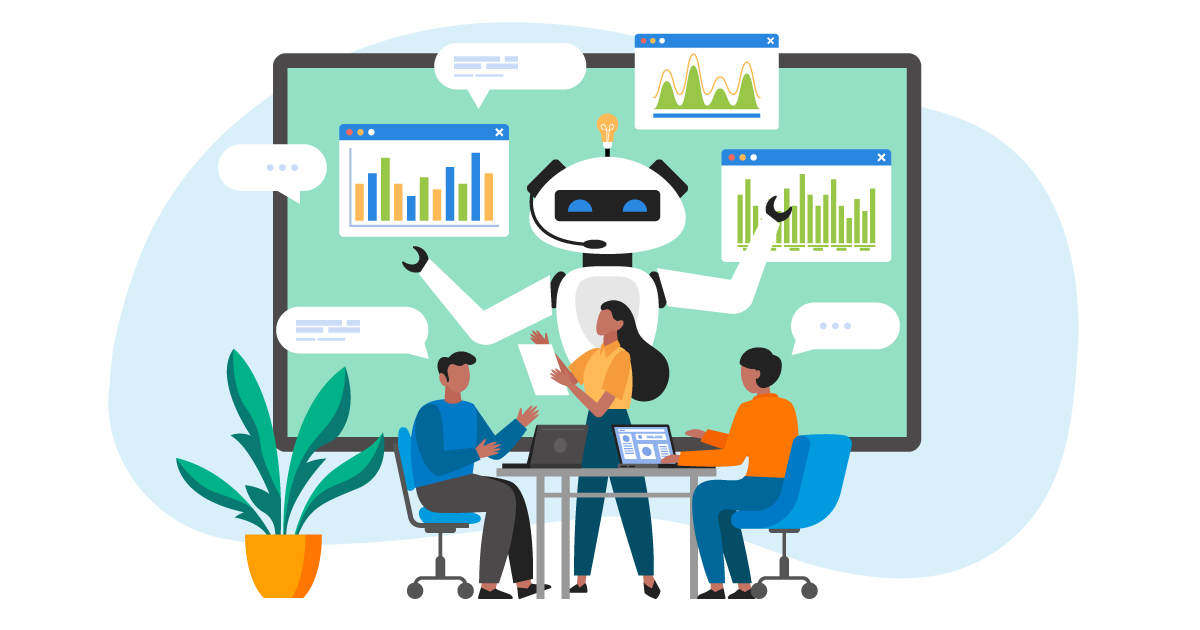 5/29/2025
5/29/2025
AI Can’t Fix Bad Data. These Ideas Can Get You on the Right Track. Real estate visionaries constantly integrate innovative technology to make their organizations more efficient.
 5/22/2025
5/22/2025
Managing Building Automation and Integration Like an Investment Portfolio What if your building automation and integration decisions were managed with the same precision, discipline, and long-term vision as Warren Buffett’s investment portfolio?
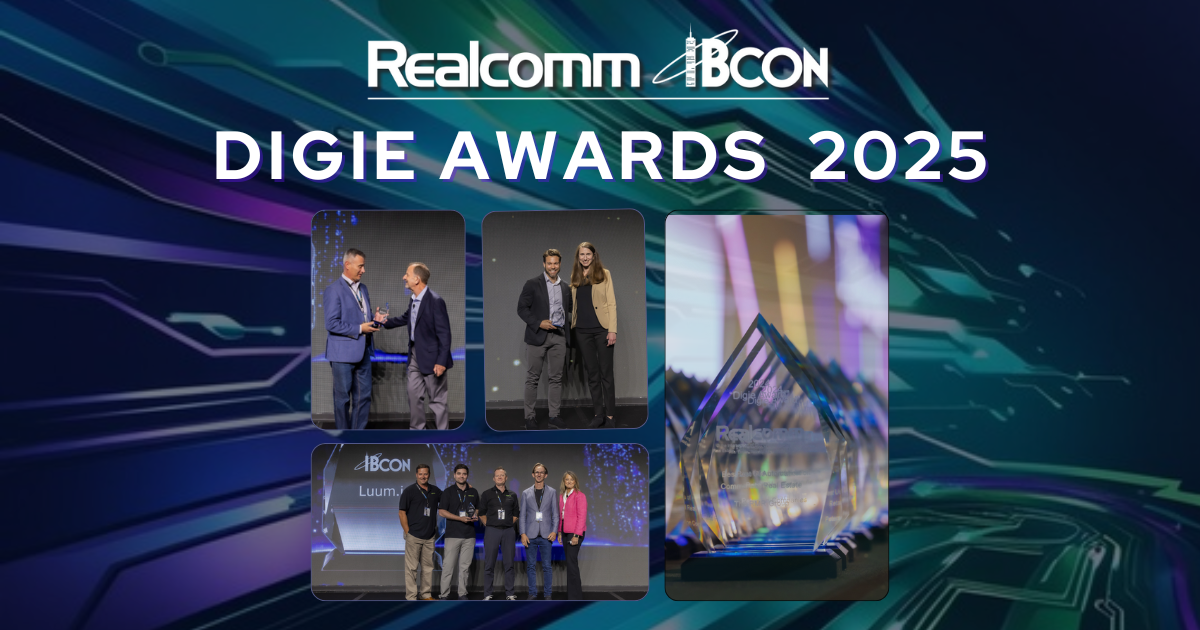 5/15/2025
5/15/2025
Tech, Talent and Transformation: 2025 Digie Finalists Announced For 27 years, Realcomm has presented the Digie Awards to acknowledge companies, real estate projects, technologies, and individuals that have advanced the commercial real estate industry through the strategic use of technology, automation, and innovation.
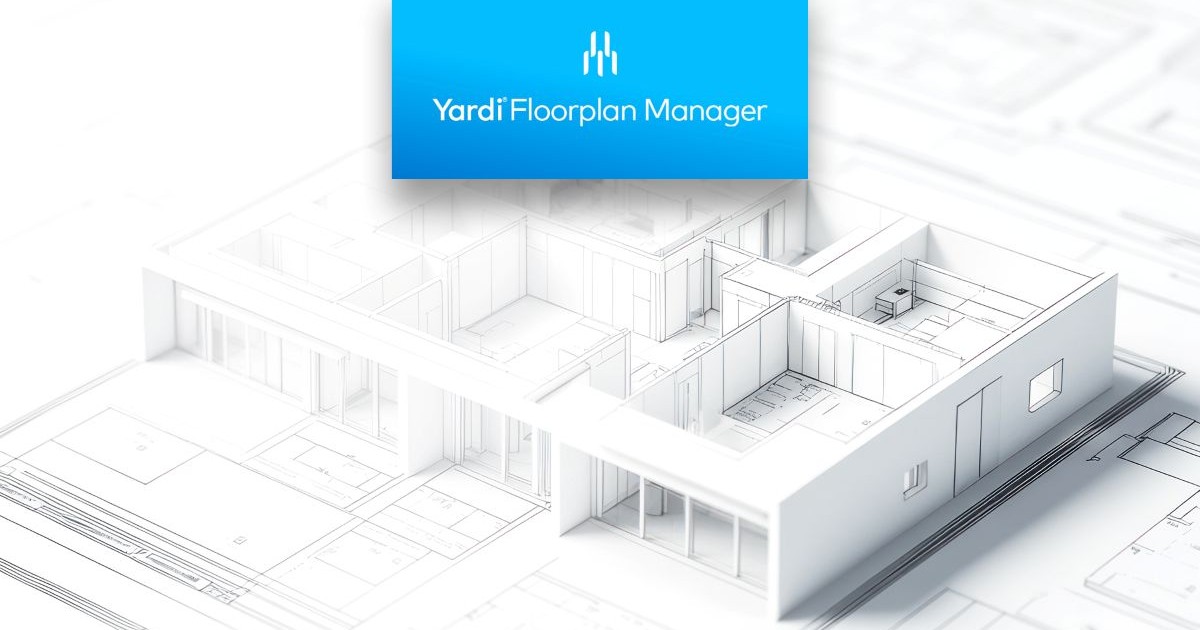 5/15/2025
5/15/2025
Empowering Space Management with Data-Driven Visualization For effective CRE space management, it’s critical to centralize lease data, maximize rental square footage (RSF), improve energy efficiency and reconfigure spaces to meet changing needs.




%20(1)%20(1)%20(1).png)







